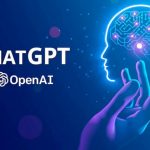Google’s AI Search Program Bard vs ChatGPT
Google has recently announced the roll-out of its new AI search program named Bard, aimed at providing more intelligent search results for users. The program has been developed to rival OpenAI’s widely popular language model, ChatGPT.
In this article, we will explore the features and capabilities of Bard and how it stacks up against ChatGPT.
Google is constantly looking for ways to improve the search experience for its users, and the latest addition to its portfolio is the AI (Artificial intelligence) search program, Bard.
In a recent blog post, Google stated that Bard is designed to help users find the information they’re looking for in a more natural and efficient manner. This new program is a significant step forward for Google as it aims to take on ChatGPT, OpenAI’s language model that has been a driving force in the field of AI and Natural Language Processing (NLP).
The Rise of ChatGPT
ChatGPT has been the go-to AI language model for many businesses and organizations looking to enhance their customer engagement and overall user experience. The model’s ability to generate human-like responses and complete tasks has made it a popular choice for chatbots, virtual assistants, and language-based applications.
Google’s Response: Bard
Google’s latest AI search program, Bard, is designed to provide more intelligent and relevant search results to users. The program uses Google’s vast database of information and applies advanced NLP techniques to generate results that are tailored to the user’s query. Google has been testing Bard internally for some time now, and it has received positive feedback from employees.
In a recent statement, Google said that Bard has the potential to revolutionize the search experience for users, providing them with more accurate and relevant information. The company is planning to test the program with a select group of users before rolling it out to the general public.
The Battle for AI Dominance
With the introduction of Bard, Google is entering into a new arena, taking on OpenAI’s ChatGPT in a battle for AI dominance. While ChatGPT has been the market leader for some time, Google is hoping that Bard’s advanced NLP capabilities and vast database of information will give it the edge it needs to challenge its rival.
In addition to the competition between Bard and ChatGPT, the battle for AI dominance also extends to Microsoft’s Bing search engine. Bing has been working on its own AI search program, and it will be interesting to see how it stacks up against Google’s Bard and OpenAI’s ChatGPT in the future.
Conclusion
Google’s new AI search program, Bard, is a significant step forward for the company as it enters the AI market and takes on its rivals. The program’s advanced NLP capabilities and vast database of information give it the potential to revolutionize the search experience for users. While it remains to be seen how Bard will perform in the market, its introduction is a testament to Google’s commitment to providing its users with the most advanced and intelligent search results possible.
What is Artificial Intelligence (AI) and How Does it Work?
Artificial Intelligence (AI) refers to the simulation of human intelligence in machines that are designed to think and act like humans. It involves the development of algorithms and computer programs that can process and analyze vast amounts of data, recognize patterns, and make decisions based on that data. AI has numerous applications in various fields, such as healthcare, finance, and transportation, and is constantly being improved to provide even more advanced and sophisticated capabilities.
What is a Language Model and How Does it Impact Natural Language Processing?
A Language Model is a statistical or machine learning model that is used to predict the likelihood of a sequence of words in a language. It is trained on a large corpus of text data and uses that information to generate coherent and contextually appropriate text. Language Models are used in various applications such as text generation, language translation, and speech recognition. The quality and accuracy of a language model is dependent on the size and diversity of the text corpus it is trained on, as well as the complexity of the model itself.
What is Natural Language Processing (NLP) and How Does it Shape Human-Computer Interactions?
Natural Language Processing (NLP) is a field of computer science and artificial intelligence concerned with the interactions between computers and human languages. NLP enables computers to understand, interpret, and generate human language, allowing for the creation of more natural and human-like interactions with technology. This includes tasks such as text classification, sentiment analysis, machine translation, and text-to-speech conversion. NLP uses techniques from linguistics, computer science, and mathematics to process and analyze human language, making it an interdisciplinary field.






























